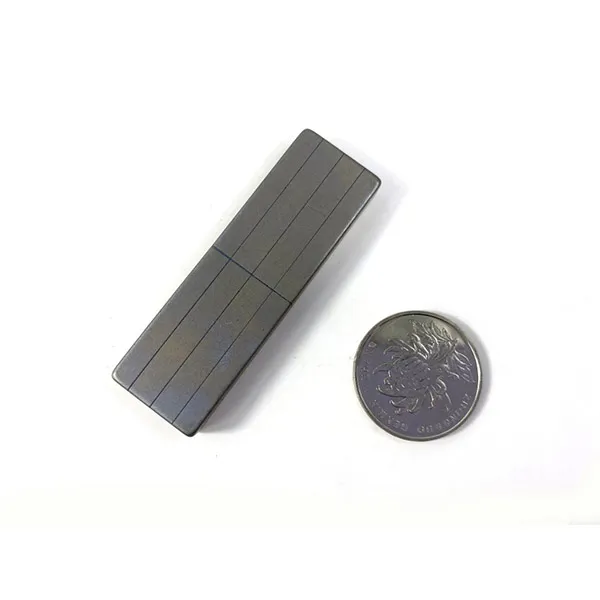What is a Laminated Magnet?
2024-10-29
Laminated magnets, also referred to as segmented magnets, represent a unique and innovative approach to magnet design. These magnets consist of two or more individual magnets that are bonded and insulated from each other. This segmentation technology serves a multitude of purposes, primarily aimed at enhancing the performance and reliability of electric machines and other applications.

The primary objective of laminated magnets is to prevent overheating. In traditional magnet designs, a single large magnet may be used to generate the necessary magnetic field. However, under high-stress conditions, such as in high-speed electric motors or generators, the magnet can become overheated, leading to potential performance degradation or even failure.
Laminated magnets mitigate this risk by dividing the magnetic material into smaller segments. These segments are then bonded together using a special adhesive or bonding agent that ensures they remain securely attached while maintaining electrical insulation between them. This segmentation allows each individual magnet to operate within its optimal temperature range, reducing the risk of overheating and extending the overall lifespan of the magnet assembly.
In addition to preventing overheating, laminated magnets offer several other advantages. They can be tailored to meet specific performance requirements by varying the size, shape, and composition of the individual segments. This flexibility allows engineers to design electric machines that are more efficient, reliable, and cost-effective.
For example, in electric motors, laminated magnets can be used to create skewed pole structures. By gradually displacing the boundary lines of magnetic domains in the circumferential direction, the resulting poles exhibit a skew that helps reduce torque pulsations and improve motor performance. This is particularly beneficial in applications requiring smooth and consistent torque output, such as in electric vehicles or precision machinery.
Laminated magnets are also advantageous in terms of manufacturability. The segmentation process allows for more precise control over the magnetic properties of the final assembly. This can lead to improved dimensional accuracy, reduced waste, and shorter production cycles.
In the automotive industry, laminated magnets are used in a variety of applications, including electric motors, sensors, and actuators. They are also found in consumer electronics, such as smartphones, tablets, and laptops, where they contribute to the performance and efficiency of various components.
Furthermore, laminated magnets are playing an increasingly important role in the development of renewable energy technologies. In wind turbines and solar inverters, for example, laminated magnets help convert mechanical or electrical energy into useful forms of power more efficiently.


